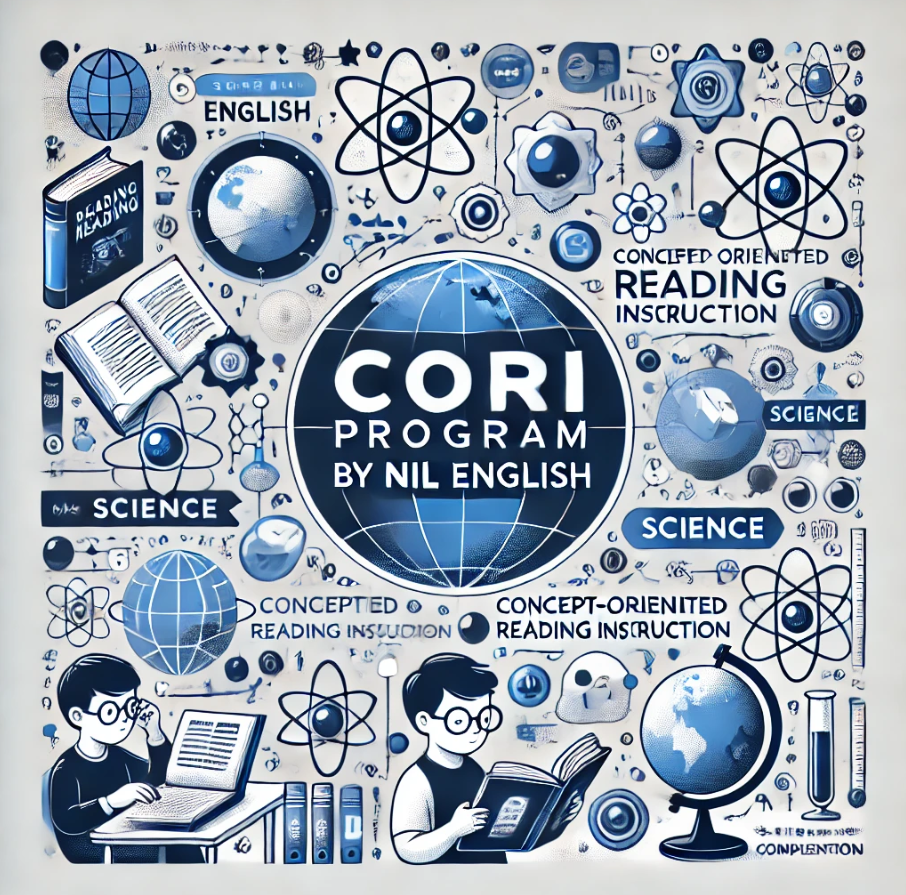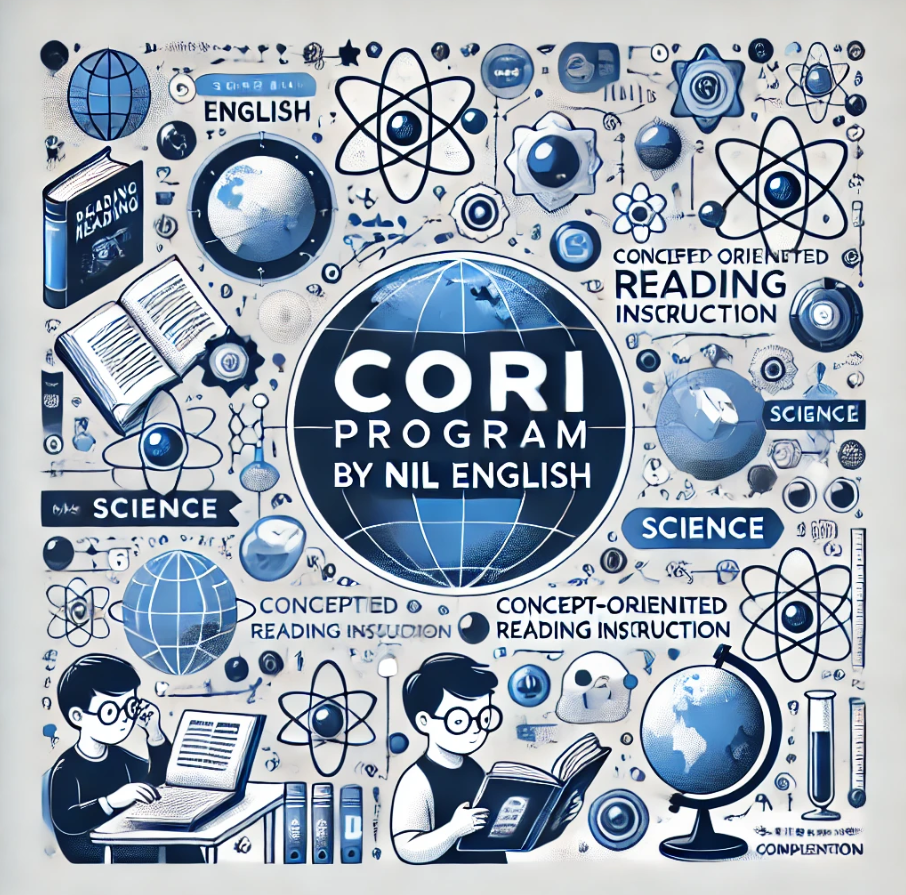CORI Program
IEP Program
닐잉글리쉬에서 프리미엄 프로그램을 진행합니다.
미국 국공립학교 교사출신 또는 ESL 전문강사와 특별 프로그램을 경험해 보세요!!
|
IEP 코스 설명 
|
|
IEP 신청자격 
닐의 IEP과정은 중고급 레벨의 학생들에게 적합한 프로그램입니다. 수업등록전에 진단평가가 진행 되며, 평가 결과 Intermediate 이상의 학생들만 신청가능합니다. |
|
IEP 코스 일정
|

|
IEP 코스비용 어학연수에 대한 모든 비용이
|
 NIL Intensive |
B LEVEL |
Intermediate |
C LEVEL |
Advanced |
Listening
| Level | Content |
|---|---|
| B1+B2 | links key points of information to supporting details from descriptive spoken texts |
| C1+C2 | extracts key points of information and supporting details from extended spoken descriptive texts |
Speaking
| Level | Content |
|---|---|
| B1+B2 | elaborates on descriptions in class discussions |
| C1+C2 | presents sustained and cohesive talks on familiar topics, handling questions appropriately |
Reading
| Level | Content |
|---|---|
| B1+B2 | identifies and organises main ideas and specific details from literary and factual descriptions and reports |
| C1+C2 | organises main and supporting ideas in texts using a range of reading strategies and sources |
Writing
| Level | Content |
|---|---|
| B1+B2 | writes literary and factual descriptions and reports incorporating information from other sources, e.g. English language newspaper or magazine articles |
| C1+C2 | writes literary and factual descriptions and reports incorporating information from other sources, e.g. English language newspaper or magazine articles |

/ B Level
B Listening + Speaking
| Suggested Language Elements |
|---|
| Listening 1. Listens for relevant information when questions are given beforehand, e.g. audio-visual materials such as TED Talks or TED Ed 2. Recalls key points and some detail 3. Initiates questions to clarify or gain understanding 4. Extracts specific information from texts heard in class Talking 1. Contributes information and expresses ideas in classroom discussions 2. Is aware of need to provide background information to listeners unfamiliar with the topic 3. Initiates questions to clarify or gain information 4. Answers question to clarify information provided |
B Reading
| Suggested Language Elements |
|---|
|
1. Identifies important features of text organisation, e.g. chapter, section, paragraph, topic sentences 2. Uses knowledge of sentence structure and text organisation to identify meaning of unknown words 3. Locates information for a specific purpose 4. Formulates key questions to help identify information from a literary or factual description or report |
B Writing
| Suggested Language Elements |
|---|
|
1. Writes using sequenced organisational framework and identifiable topic sentence 2. Combines simple sentences into more complex ones using common conjunctions and relative pronouns 3. Writes essays based on information provided in class 4. Edits own writing for accuracy and coherence 5. Maintains appropriate balance between main ideas and supporting details |
/ C Level
C Listening + Speaking
| Suggested Language Elements |
|---|
| Listening 1. Follows the gist and some detail of a spoken descriptive text on new information 2. Organises information gained from spoken language, takes suitable notes 3. Evaluates information gained from spoken descriptive texts for relevance, accuracy and completeness 4. Identifies the effect of devices such as rhythm, metaphor and repetition in descriptive texts 5. Defines the nature and purpose of the information being given Talking 1. Leads a discussion on the spoken text using linking/transition words (e.g. In addition, Furthermore, Nevertheless) 2. Presents an unrehearsed talk on a familiar topic 3. Creates and asks a set of discussion questions on a particular topic/class audio material |
C Reading
| Suggested Language Elements |
|---|
|
1. Orders information from texts, takes appropriate notes in English 2. Selects key information for a purpose, rejecting irrelevant and unimportant information 3. Relates organisational features of text to purpose, e.g. chapter headings, bold words, sidebars, pictures, captions 4. Shows understanding of key cultural attitudes, beliefs and values underlying language used in texts 5. Identifies relationships between paragraphs |
C Writing
| Suggested Language Elements |
|---|
|
1. Shows awareness that words may need to be carefully chosen because of social and cultural sensibilities, e.g. plump/fat, man/people 2. Writes and adapts essays to suit different contexts and audiences 3. Uses a variety of content related words and phrases in a writing assignment 4. Rewrites texts to suit own purposes, e.g. to present information found in a newspaper article as a report or presentation |


SCHEDULE |
Monday ~ Thursday
| Level | Content |
|---|---|
| 1st class (50min) |
Grammar & Writing |
| Break time (10min) |
Break |
| 2nd class (50min) |
Reading Comprehension & Vocabulary Building *Incorporating listening material |
| Break time (10min) |
Break |
| 3st class (50min) |
Speaking & Pronunciation *Incorporating listening material |
| Break time (10min) |
Break |
| 4st class (50min) |
Essay |
Friday
| Level | Content |
|---|---|
| 1st class (50min) |
Grammar & Writing |
| Break time (10min) |
Break |
| 2nd class (50min) |
Reading Comprehension & Vocabulary Building *Incorporating listening material |
| Break time (10min) |
Break |
| 3st class (50min) |
Practice, focusing on the specific student’s areas of improvement (e.g. consonant pairs (“rt” “rl”), long vs short vowel sounds) |
| Break time (10min) |
Break |
| 4st class (50min) |
Essay |
















